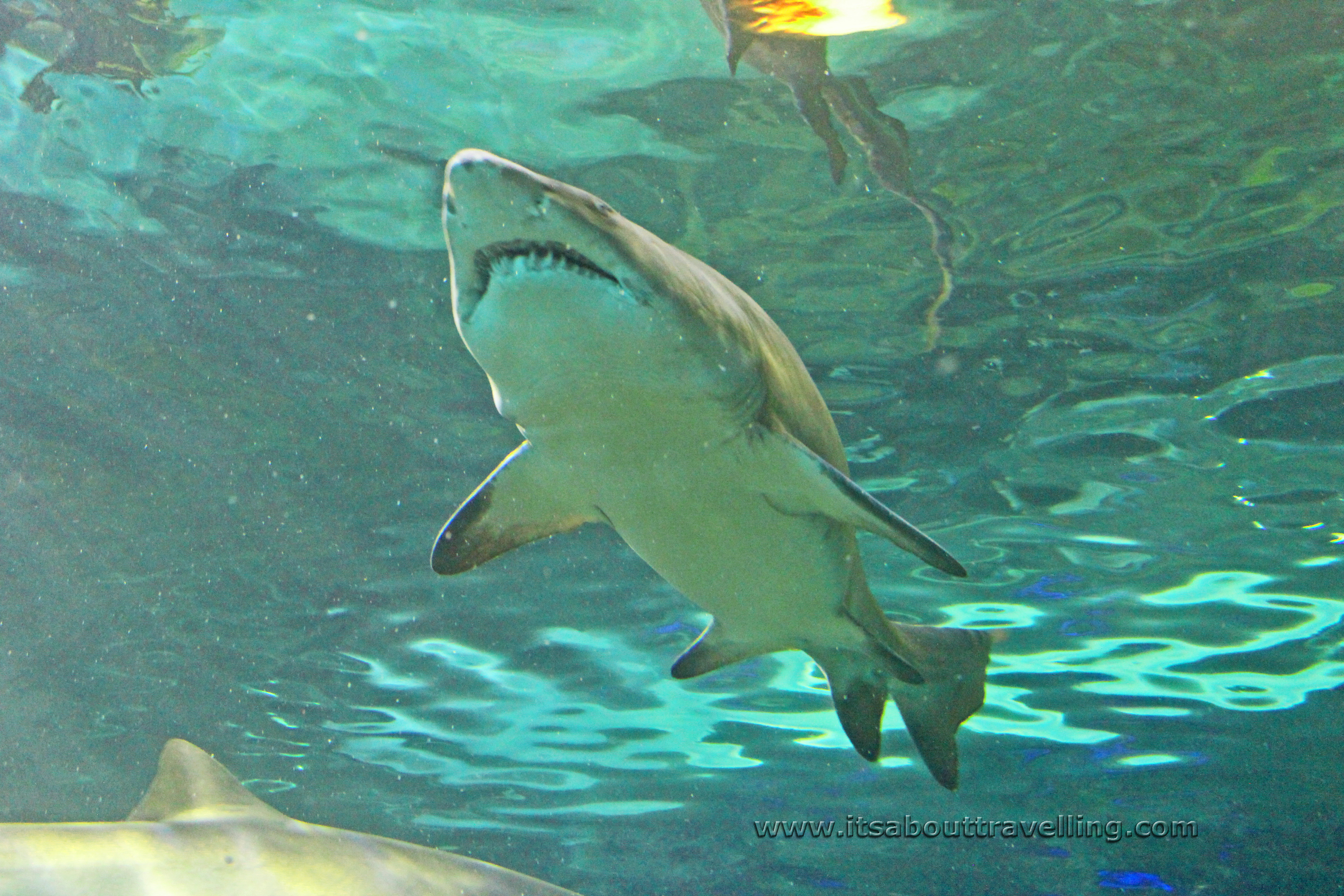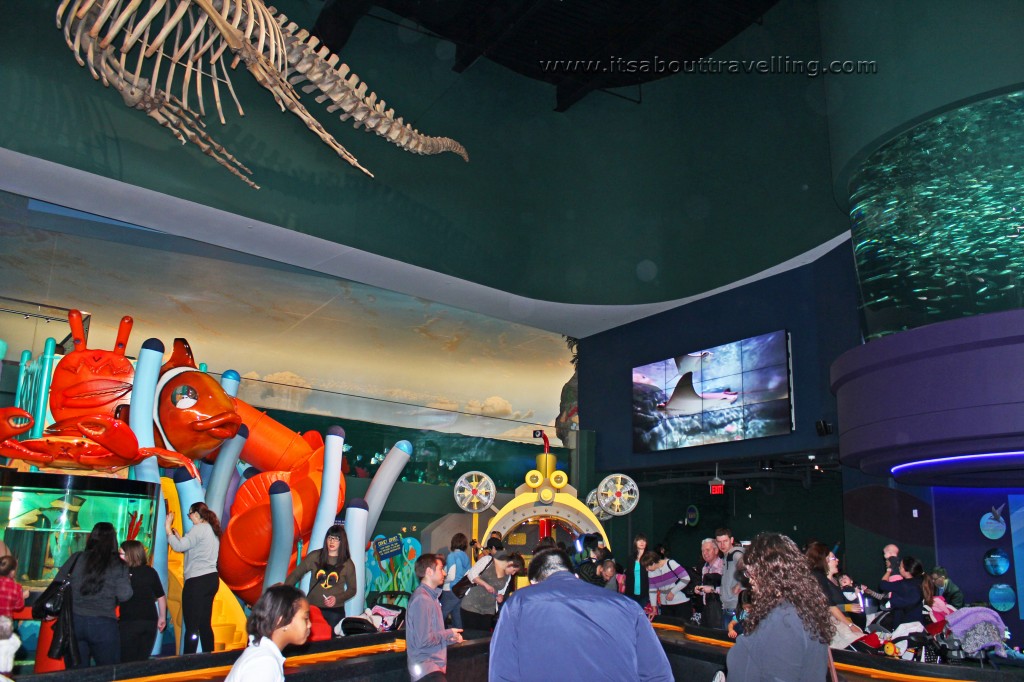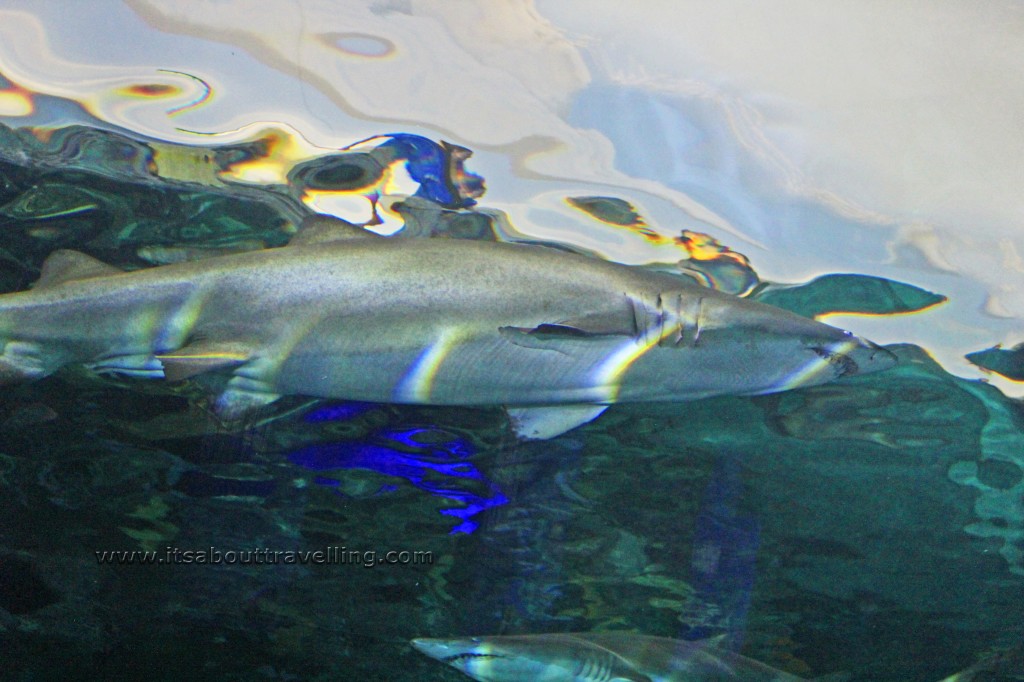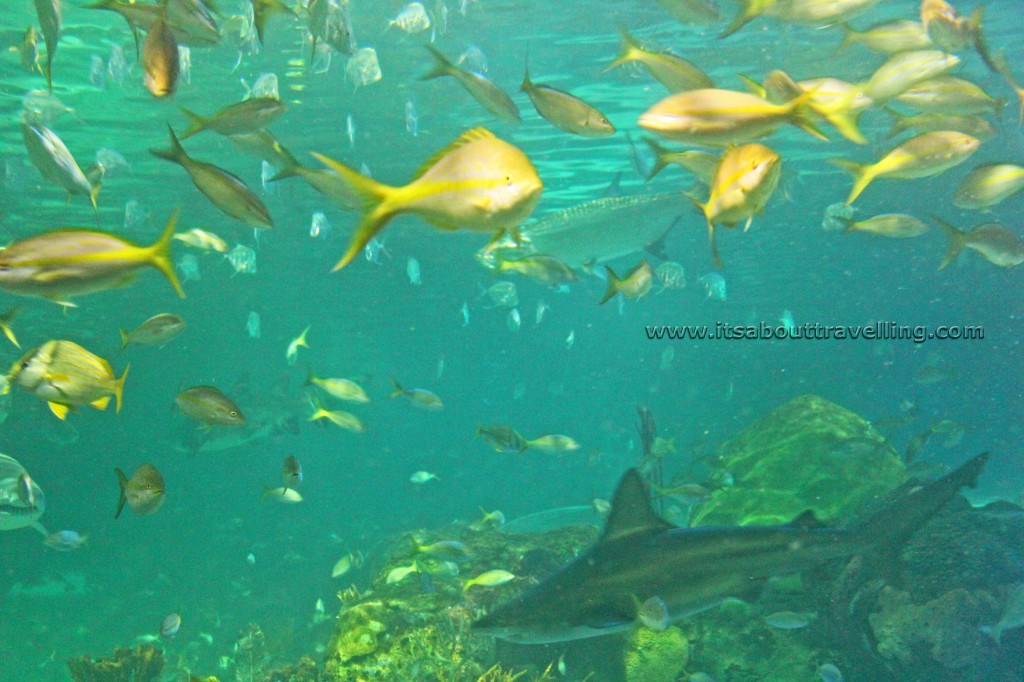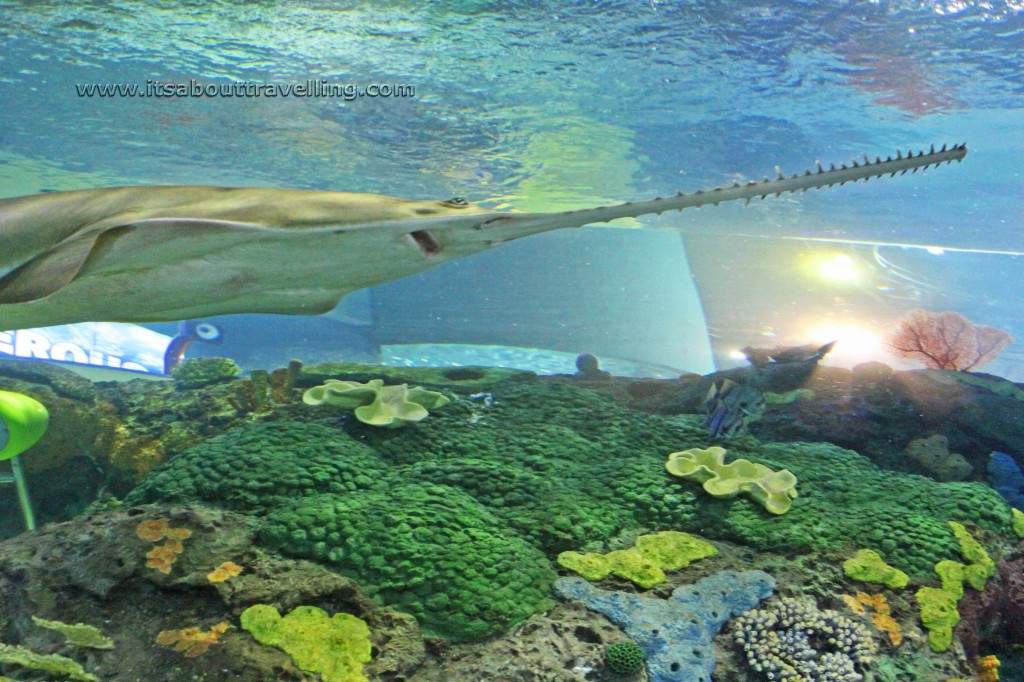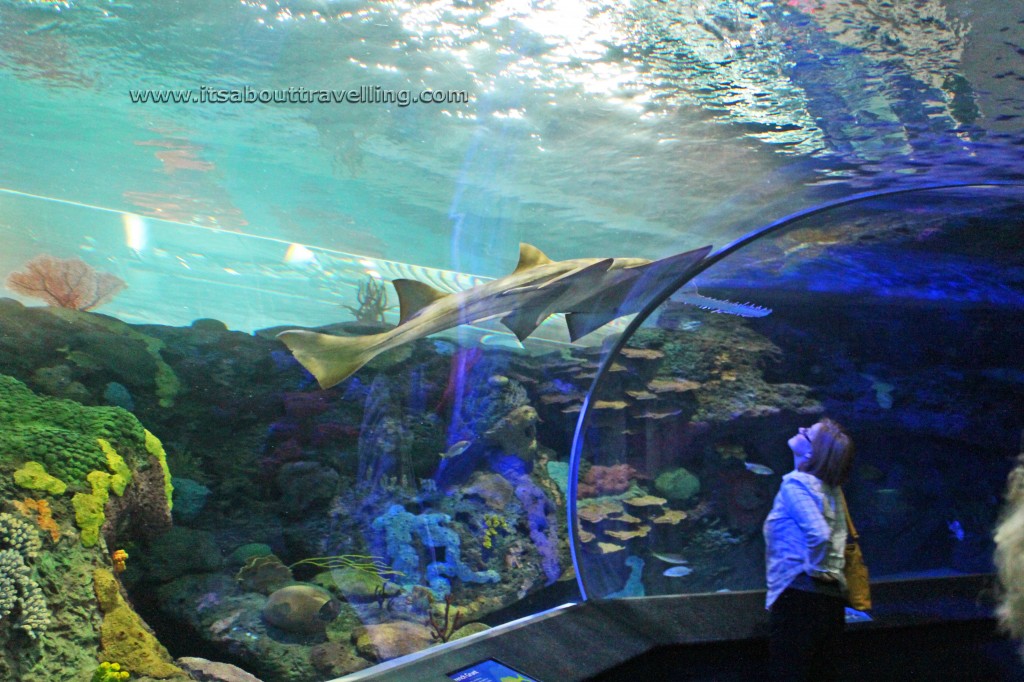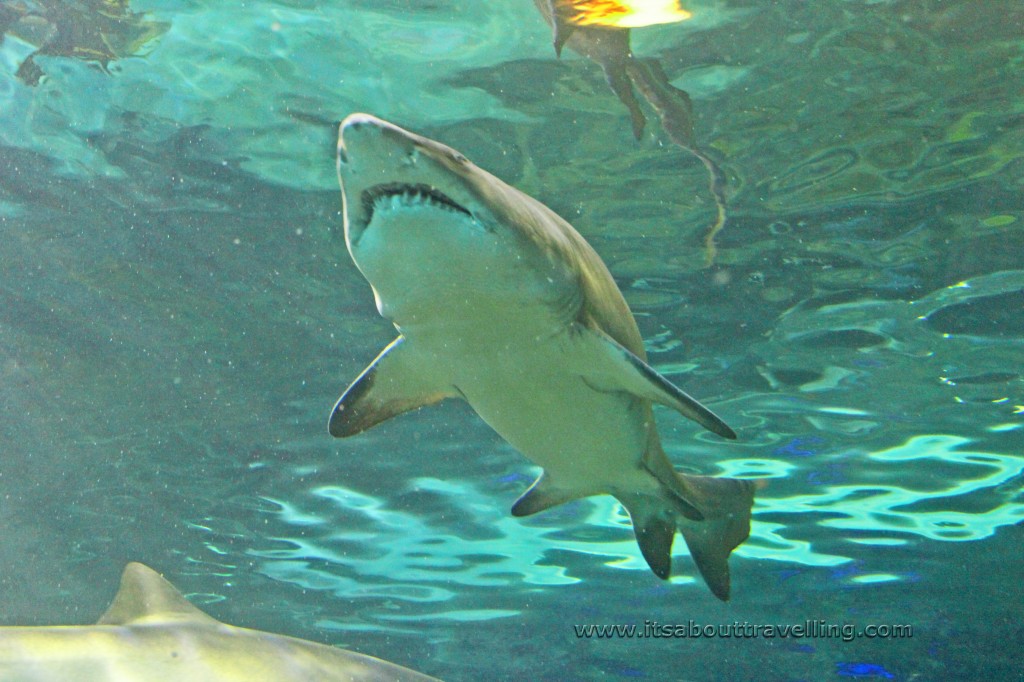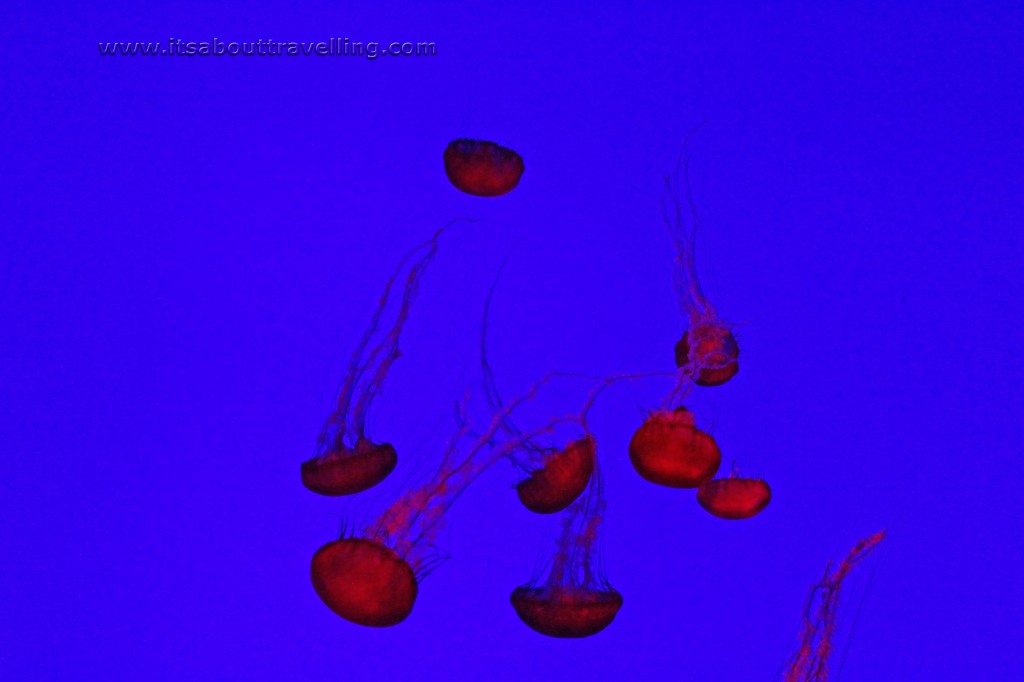Opened on October 16, 2013, the crowds had hardly subsided by our first visit to Ripley’s Aquarium of Canada on January 14, 2014. However, going on a Tuesday and right after the kids were back at school after the Christmas Break made for a liveable crowd. Friends had gone the Saturday before us and there was hardly an inch of floor space you could call your own.
As for the title, there are supposed to be two Sea Turtles in the massive main Dangerous Lagoon tank. We took three trips through and never saw them. They were there, staff insisted but we just couldn’t find them…
The above image is of the main activity area on the lower floor of the Ripley’s Aquarium of Canada. This is where all the hands-on stuff is, along with the restaurant. Included are some amazing twists to the everyday childrens playground with plexi-glass tubes that lead through large tanks with very large fish inside – talk about an intimate encounter with nature!
The aquarium was originally pegged for a 2007 opening at a location beside Great Wolf Lodge in Niagara Falls. However, plans fell through and the aquarium was built at the foot of the CN Tower. In hindsight, the Toronto location is much better suited for a world class attraction like this.
The Aquarium of Canada in Toronto is of one of three aquariums in North America belonging to Ripley’s Believe It Or Not, with the first opening in 1997. The other two include the Aquarium of the Smokies in Gatlinburg, Tennessee and the Aquarium of Myrtle Beach in Myrtle Beach, South Carolina.
By far the greatest feature of Ripley’s Aquarium of Canada is Dangerous Lagoon Shark Tunnel. Dangerous Lagoon holds 2.84 million litres of water and the glass tunnel through the spectacle is nearly the length of a football field. You can walk through or stand on a slow moving conveyor belt.
Above is from Dangerous Lagoon. The yellow-tailed snapper make me long for snorkeling in the Caribbean. The Shark, well, that’s a different story. The total volume of water at the aquarium is 5.7 million litres, which means Dangerous Lagoon is responsible for more than half of the venue’s total water.
These guys are not advertised as the stars of the show but they certainly are. The Sawsharks are nothing less than ‘cute’ as they basically sleep on the roof of the tunnel through Dangerous Lagoon. There were several young Hammerhead Sharks that don’t appear in any of the images in this article but, I believe, might be found in the video below.
The aquarium is opening seven days per week, 365 days a year. The hours each day are typically 9am to 9pm but check ahead if you’re visiting because it sometimes closes early for private functions. Daily rates are $29.98 for adults, $19.98 for youths 6 to 13 and seniors and children 3-5 pay just $9.98. Children three and under are free.
Yearly passes are decently prices at $100 for adults, $60 for youths and seniors and $25 for children.
The reef sharks are pretty intimidating. Coming soon to Ripley’s Aquarium of Canada is a sleepover option. On Saturday nights, for $99 per person, you can stay overnight at the aquarium. Apparently, you bring your sleeping bag and bed down right in the shark tunnel. Your fee includes admission, breakfast and a behind the scenes tour – so, well worth the price.
Another hot spot was Planet Jellies. Tranquil music is piped in and the main Kreisel (Jelly Fish tank) is illuminated with a rotation of colours. The above image is from the main tank.
Other areas at the aquarium, besides Dangerous Lagoon and Planet Jelly include Canadian Waters, Rainbow Reef and Ray Bay. Canadian Waters has a fresh water tank with fish from the Great Lakes, a lobster tank, a tall tank with a kelp forest, among other smaller tanks. Rainbow Reef is not only for gay and lesbian fish! (oh, come on – they were asking for it when they named it that…) This is a simulation of a Caribbean Coral Reef with smaller and colourful reef fish. Ray Bay is where you will find the Stingrays and young Hammerheads.
The video below was taken the same day.
